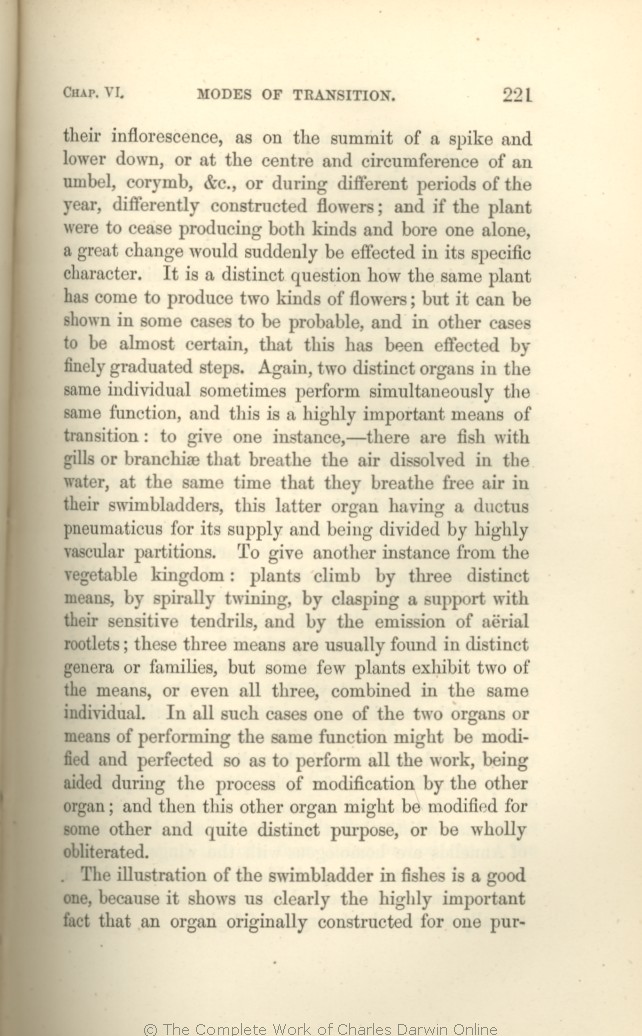their inflorescence, as on the summit of a spike and lower down, or at the centre and circumference of an umbel, corymb, &c., or during different periods of the year, differently constructed flowers; and if the plant were to cease producing both kinds and bore one alone, a great change would suddenly be effected in its specific character. ↑| 1 blocks not present in 1859 1860 1861 1866; present in 1869 1872 | | Many plants are known which regularly produce at the same time differently constructed flowers; and if such plants were to produce one kind alone, a great change would in some cases
be effected in
the character of the species.
|
| is a distinct question how 1866 |
| can also be shown that the production of the two sorts of flowers by 1869 |
| is, however, probable that the two sorts of flowers borne by 1872 |
| has come to produce two kinds of flowers; but it can be shown in some cases to be probable, and in other cases to be almost certain, that this has been effected by finely graduated steps. 1866 |
| has been effected by finely graduated steps. 1869 |
|
were originally differentiated by finely graduated steps, which may still be followed in some few cases.
1872 |
| organs 1866 1869 | | organs, 1872 |
| individual sometimes perform simultaneously 1866 |
| individual may simultaneously perform 1869 |
| organ under two very different forms, may simultaneously perform in 1872 |
| function, 1866 1869 |
| individual the same function, 1872 |
| a highly 1866 1869 | | an extremely 1872 |
| instance,—there 1866 1869 | | instance,— 1872 |
| are 1866 1869 | | there are 1872 |
| having a ductus pneumaticus for its supply and 1866 |
| OMIT 1869 1872 |
| partitions. 1866 |
| partitions, and having a ductus pneumaticus for the supply of air. 1869 1872 |
| aërial 1866 1869 | | aërial 1872 |
| genera or families, 1866 |
| groups, 1869 1872 |
| plants 1866 1869 | | species 1872 |
| all such 1866 1869 1872 | | these 1859 1860 1861 |
| cases 1860 1861 1866 1869 1872 | | cases, 1859 |
| or means of performing the same function might 1866 |
| might with ease 1859 1860 |
| might 1861 |
| for performing the same function might 1869 |
| might readily 1872 |
| work, 1866 1869 1872 | | work 1859 1860 1861 |
| ..... 1866 1869 1872 | | by itself, 1859 1860 1861 |
| process 1859 1860 1861 1866 | | progress 1869 1872 |
| wholly 1866 1869 1872 | | quite 1859 1860 1861 |
|









